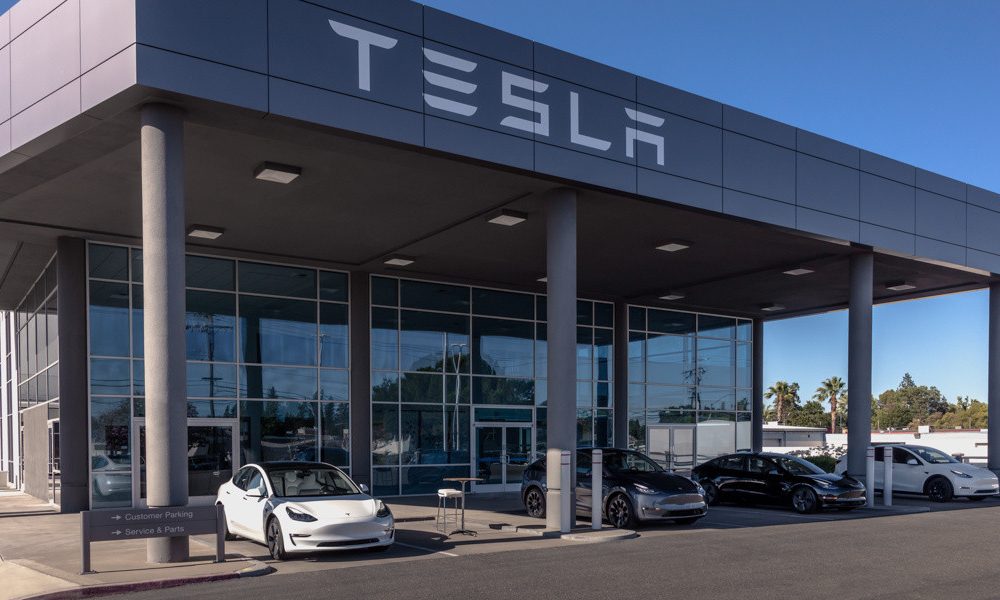The $7,500 EV tax credit has officially expired, as it came to its closure at midnight on September 30. Many are wondering what will happen to the EV makers in the United States that had a huge competitive advantage over their competitors, a $7,500 discount that could be applied at the point of sale.
Tesla stands to thrive from the lack of tax credit, and although it is hard to believe, brighter days could be ahead for the company, starting with Q4, which began today.
Here are five reasons Tesla might be in better shape without the tax credit being available:
No Tax Credit Means Price Cuts
Tesla has to adjust its pricing strategy now that the $7,500 tax credit is gone, and when it lost the previous tax credit after reaching its cap in 2019, it used a more affordable model to surge sales. At the time, that more affordable model was the Model 3.
Tesla boosted deliveries by over 50 percent that year without any tax credit by simply offering a cheaper model. The credit, in a way, distorts the market, and companies, while attempting to innovate, are able to offer the discount with the help of the government.
Tesla price cuts push EV market toward affordability with broader influence
Companies will now have to weigh what they can discount their vehicles by to keep profits reasonable, but also stoke demand.
Ultimately, Tesla has the ability to use manufacturing and technological efficiencies to increase affordability. It has more control to fluctuate pricing, and price cuts could be on the way.
The Playing Field Becomes Fairer
Companies like Ford and General Motors have also reaped the benefits of the tax credit, but their situation is much different than Tesla’s.
Ford and GM are not profitable on their EV projects, so the EV tax credit has been relied upon to mask high production costs and dealer markups, which have widely impacted their demand. Ford is among the more popular brands that have dipped their toes into the EV market, but they have been forced to adjust their strategy on several occasions due to a lack of profits.
Tesla’s vehicles have been profitable for some time, and the company has been able to make money from its offerings faster. Cybertruck was profitable after just one year of production.
Tesla Cybertruck achieves positive gross margin for first time
Removing subsidies will expose the financial weaknesses of those domestic competitors, and we will likely see those companies scale back their EV efforts in the coming months and years. This will help Tesla more than having access to the tax credit would, which is something CEO Elon Musk has said for years:
First of all, Tesla hasn’t had that consumer tax credit for years & we didn’t ask for this one – GM & Ford did
— Elon Musk (@elonmusk) October 6, 2022
In my view, we should end all government subsidies, including those for EVs, oil and gas
— Elon Musk (@elonmusk) November 14, 2024
Tesla’s Maturity Shows and Investor Confidence Will Boost
Tesla was once dismissed as a subsidy-dependent startup, but that narrative truly died years ago, as it continued to perform well against competitors even after losing the tax credit.
Musk has said himself that the cancellation of these subsidies “will only help Tesla,” as it will highlight the company’s ability to be self-sufficient.
Elon Musk reiterates call for all subsidies on all industries to be removed
Using things like manufacturing efficiencies and vertical integration, Tesla has been less dependent than others on help to build its cars. If anything, investors will likely see the next few months as a make-or-break period for companies building EVs.
Subsidies Sometimes Can Inhibit True Innovation
Some companies can tend to become complacent when government subsidies are offered on their products. Instead of making things better and trying to find new ways to make cars more affordable, some can lean on the help they’re getting.
After subsidies ended for Tesla in 2019, the company achieved two major breakthroughs: the Cybertruck and its energy storage projects scaled to gigawatt-hours. The argument is not that Tesla becomes complacent with the tax credits, but the company is going to feel more pressure to fight for innovation now that its back is up against the wall.
It already offers a better product from a tech standpoint, so affordability could truly be the next major change we see.
Affordable Models Will Be Even More Sought After
Tesla will launch its affordable models this quarter, and with no more tax credit to lean on, these new cars will be what many consumers go for.
If Tesla can launch a model that is close to $30,000 without a tax credit, the company stands to regain a significant portion of its market share from competitors that have eroded it over the past few years. This will undercut the vast majority of electric cars that are currently offered.
2025 Nissan Leaf S Trim – $28,140
2025 Fiat 500e Base Trim – $32,500
2025 Chevrolet Equinox EV – $33,600
Those are the three most affordable EVs available in the U.S. right now, and those prices are without the EV tax credit. If Tesla can get close to $30,000, it will truly make a mark and there might not be all that much of a change in its yearly delivery figures.

